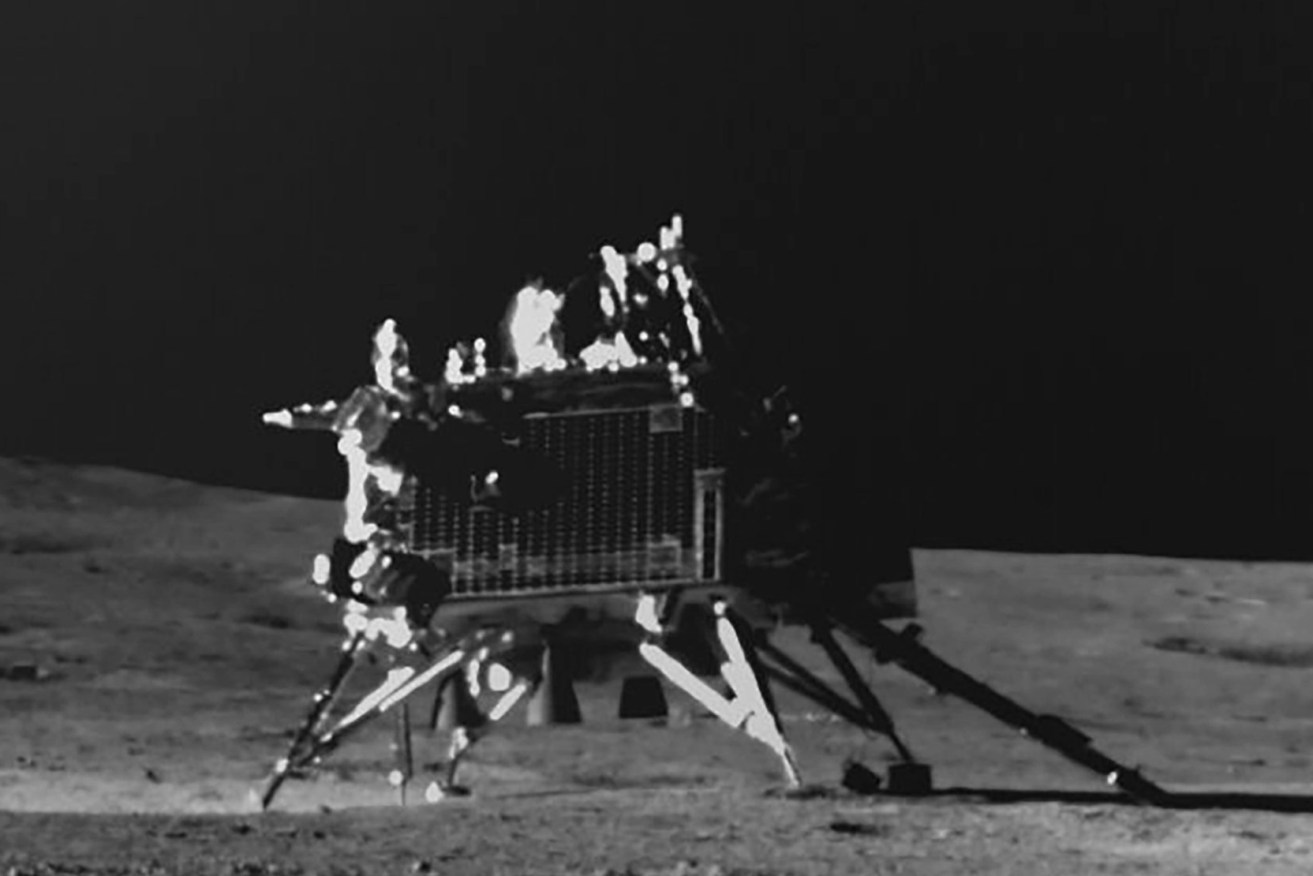Over the Moon: First commercial flight lands without incident near lunar south pole
A spacecraft built and flown by Texas-based company Intuitive Machines has landed near the south pole of the moon, the first US touchdown on the lunar surface in more than half a century and the first ever achieved entirely by the private sector.

This image provided by the Indian Space Research Organisation (ISRO) shows Vikram lander as seen by the navigation camera on Pragyan Rover on Aug. 30, 2023. (Indian Space Research Organisation via AP)
The six-legged robot lander, dubbed Odysseus, touched down at about 6.23pm US eastern time (10.23am Friday AEDT), the company and NASA commentators said in a joint webcast of the landing from Intuitive Machines’ mission operations Centre in Houston.
As planned, the spacecraft was believed to have come to rest at a crater named Malapert A near the moon’s south pole, according to the webcast.
The landing, one day after the spacecraft reached lunar orbit and a week after its launch from Florida, was confirmed by signals beamed back some 384,000km to mission control.
But communication with the vehicle took several minutes to re-establish, and the initial signal was faint, leaving mission control uncertain as to the precise condition and position of the lander, according to flight controllers heard in the webcast.
The spacecraft was not designed to provide live video of the event.
Touchdown came after an 11th-hour glitch with the spacecraft’s autonomous navigation system that required engineers on the ground to employ a work-around solution.
The vehicle is carrying a suite of scientific instruments and technology demonstrations for NASA and several commercial customers designed to operate for seven days on solar energy before the sun sets over the polar landing site.
The NASA payload will focus on collecting data on space weather interactions with the moon’s surface, radio astronomy and other aspects of the lunar environment for future landers and NASA’s planned return of astronauts later in the decade.
The uncrewed IM-1 mission was sent on its way to the moon on Wednesday atop a Falcon 9 rocket launched by Elon Musk’s company SpaceX from NASA’s Kennedy Space Center in Cape Canaveral, Florida.
Thursday’s landing represented the first controlled descent to the lunar surface by a US spacecraft since Apollo 17 in 1972, when NASA’s last crewed moon mission landed there with astronauts Gene Cernan and Harrison Schmitt.
To date, spacecraft from just four other countries have ever landed on the moon – the former Soviet Union, China, India and, mostly recently, just last month, Japan. The United States is the only one ever to have sent humans to the lunar surface.
The arrival of Odysseus also marks the first “soft landing” on the moon ever by a commercially manufactured and operated vehicle and the first under NASA’s Artemis lunar program, as the US races to return astronauts to Earth’s natural satellite before China lands its own crewed spacecraft there.
NASA aims to land its first crewed Artemis in late 2026 as part of long-term, sustained lunar exploration and a stepping stone toward eventual human flights to Mars. The initiative focuses on the moon’s south pole in part because a presumed bounty of frozen water exists there that can be used for life support and production of rocket fuel.












